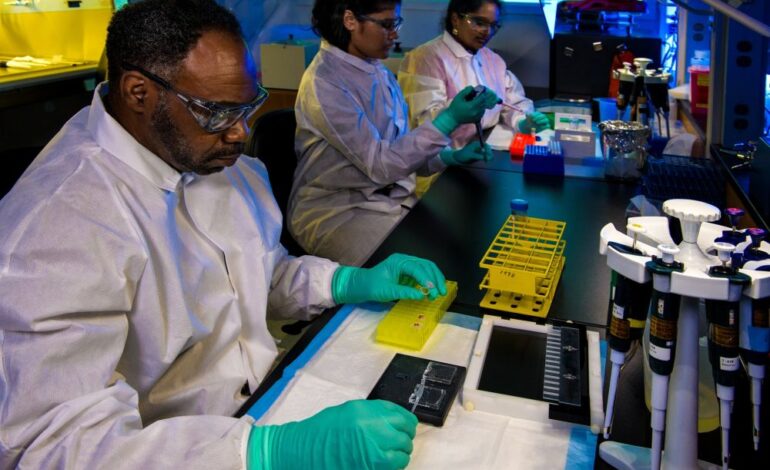How to Write a Lab Report and Get an A+

Studying sciences, students must be able to produce technical reports clearly and concisely. The ability to write an informative lab report is fundamental for learners of Formal and Natural Sciences. Such written pieces always demonstrate the aims, methods, findings, and conclusions of a particular experiment. Such information must be understandable and valuable to the reader.
And while writing such technical papers is common for students of respective degrees, many still find them challenging, demanding, and time-consuming. Therefore, it isn’t surprising that numerous students cry out for help from academic services. Such agencies have experienced writers that can consult, edit, proofread, or even complete a full-fledged experiment from scratch.
However, is typing “write my lab report” and asking others to do that the only way to tackle the assignment and score a high grade? Definitely not. This guide unveils the steps you should take to complete a lab report and collect your A+.
Practical Structure
A well-written lab report is appropriately structured and accurate. Regardless of the word count, it always has a standard set of elements. They are:
- Title
- Abstract
- Introduction
- Materials and Methods
- Results
- Discussion
- Conclusion
- References
- Appendix/Appendices
While some of them might seem basic and default, it would still be reasonable to get aware of all the mentioned components and their function before diving into writing a lab report.
Title
At the start of any technical report, there is a particular set of preliminary information. It is always present in the title page, content page, list of figures and tables, acknowledgments, and alike. Keep in mind that the more extensive your lab report, the more such information it must contain.
Abstract
An abstract usually follows the title. Also known as the summary or executive summary, it contains compressed and the most salient information about the entire work. The abstract’s primary purpose is to cast light on the whole lab report, its aims, methods, and conclusions. An abstract helps the readers realize whether the topic and results resonate with their interests and whether or not the report is worth reading at all. Overall, an abstract has:
- The aim
- The background context
- The methods and equipment used
- The results acquired
- Observations
- The findings
A well-built abstract is self-contained; when reading it, a person doesn’t need to refer to other sources to understand the main point.
Although an abstract is among the first elements presented in a report, it is usually created once the experiment is done and the report is written.
Introduction
The introduction primarily provides the reader with a background of the area. The intro always contains the aim or objective. For instance, if you plan to test a hypothesis, you have to inform your readers about this aspiration.
Unlike other papers, a lab report requires delving into the background of the science. The writer should enumerate the reasons for carrying out an experiment and state who will benefit from the work. Also, when you use sources that contain acronyms, ensure highlighting and explaining them in the introduction.
To sum up, the introduction must have:
- Background information
- Information on works done before the report
- Aims and objectives
- Reasons for doing an experiment
Materials and Methods

This section exhaustively depicts how you conducted your experiment. This includes an illustration of materials and methods you had used. Here, you should provide the complete list of items and techniques. These two questions will help you organize the section:
- What materials were used?
- How were they used?
When working on your list, describe the process using the past tense, including a passive voice. Although the latter might lower the work’s readability score, including a passive voice is unavoidable in a lab report.
Results
The results section should contain tables and figures to best demonstrate the outcomes of an experiment. Also, it should describe an impartial description of the results and the observations that were made. Students often make a common mistake writing the results and proceeding to interpret them. Instead of doing that, process your data and include only pivotal figures and tables.
Discussion
When writing a discussion, make sure to explain your results and interpret any made observations. Also, keep in mind that you should refer to authoritative sources to back up your arguments and thus remain reasonable. In general, this section must answer the questions:
- What do the results mean?
- What trends are apparent in the data?
- Are there any errors?
Think carefully about how you organize this section. A smooth transition between sections will help you achieve logical flow and tie one topic with another.
Conclusion
No new information should appear in the conclusion section. In conclusion, you must go through the work and wrap up the most important elements.
Aside from that, you can add proposals for further work or provide what could have been done to better the entire experiment. However, suppose you have a pack of information regarding further work and improvements. In that case, you can create a separate section and write it there.
References & Appendices
In references, provide only those sources you have used or mentioned in the report. The formatting style depends on your subject and the assignment’s requirements, so make sure to get familiar with them before designing a reference page.
Appendices usually contain all the data, such as calculations, full transcripts, etc. Add them at the end of your report.
Language and Style
A lab report falls in the category of academic writing, so proper language is imperative. First and foremost, make sure your content is grammatically and lexically sound and contains little to no punctuation mistakes.
Suffice it to say, the use of colloquial language and jargon is unacceptable. Pay close attention to it, as slang can affect your grade significantly.
The writing style should be formal and accurate, with no use of vague phrases and unnecessary information. Also, make your sentences visually appealing, i.e., eliminate contractions and personal pronouns, except for it.
Referencing and Plagiarism
Everything needs to be cited–be it a picture, excerpt from a textbook, article, or journal. Every time you rest upon a source, ensure citing it according to the formatting style you follow. Otherwise, you use somebody’s intellectual property illegally, jeopardizing your report.
Presenting Data and Sampling
Making a lab report coherent and transparent is of great importance. Data can be univariate and bivariate.
- Univariate: It is a type of data that comprises only a single attribute or characteristic, like weights, heights, ages, times.
- Bivariate: This type of data is more used in experimental statistics, comparing two different variables.
Whatever data type you choose, make sure to sort it correctly.
It is critical to get a representative sample to review to help you draw conclusions. There are four main types of sampling:
- Simple random sample
- Systematic sample
- Stratified sample
- Cluster sample
Likewise, consider structuring and keeping them in the correct order if you use more than one sample type.
Writing a lab report differs from writing any other paper. A lab report requires conducting an experiment and following a unique structure to introduce the topic, reveal its aims and objectives, describe methods and materials, discuss the results, and many more. Indeed, writing a technical report can be overwhelming. However, with the right approach and the mentioned information, you are sure to create a top-notch paper and score the highest grade.










